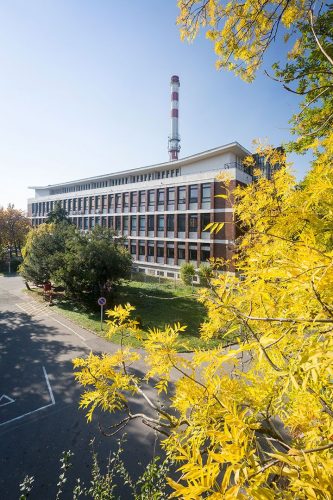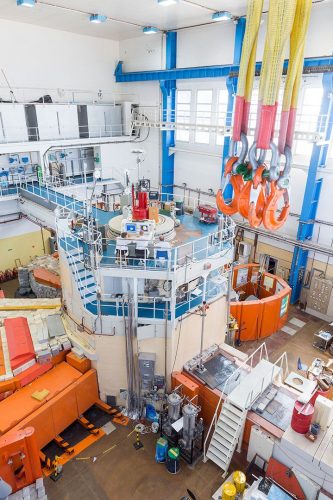About the School
The Budapest neutron school was one of the first to offer – besides theoretical lectures – also hands-on-training on real working neutron spectrometers. The first such event was held in 1998 as an Austro-Hungarian training course. A widely opened international school was first organised on the occasion of the 2nd European Conference on Neutron Scattering in 1999.
Since 2001 we have decided to extend the school into a training course, and offer the hands-on-training possibilities of the cold and thermal neutron beam instruments at BNC for the international user community. In this way our school has become a regular event, and it has got the name CETS – Central European Training School, to respond indeed, to the situation that most of the students are coming from our neighbour countries. In the past 20 years over 500 young scientists from nearly 40 countries have been trained at CETS.
In 2017 we decided to introduce a new structure of the usual one-week programme: instead of mixing lectures and instrumental training, now the lectures are condensed for the first two days, which is followed by the experimental part with extended exercises on the selected instruments. In this way, CETS now provides in a didactic way, insight into the basics of neutron physics and the experimental procedures. The lectures cover the commonly used beam techniques: diffraction, radiography, reflectometry, three-axis spectroscopy, small-angle scattering, prompt gamma activation analysis, time-of-flight techniques and neutron polarisation.


Theoretical Lectures
Theoretical lectures will be given by experts of the discussed topics. Lectures from CETS 2021 are available here.
The following topics will be discussed:
- Neutron production and neutron sources.
- Introduction to neutron scattering. Basics of neutron physics. Coherent and incoherent scattering. Scattering of neutrons in condensed media. Planning a scattering neutron beam experiment.
- Neutron diffraction: Basics. Why and how to use neutrons for diffraction. Neutron diffraction in materials and life-sciences.
- Small angle neutron scattering (SANS): Basics. What is small angle neutron scattering good for? SANS instrumentation and data analysis. Application examples.
- Neutron reflectivity: Principles of neutron reflection. Neutron reflectometers. Representation and data analysis. Research examples.
- Time-of-flight spectroscopy: Theoretical basics. What happens during a neutron experiment? Instrumentation. Data analysis. Research examples.
- Three-axes spectrometry: Introduction to inelastic neutron scattering. Relation to other methods. Three-axes spectrometer, research examples, formal and technical aspects.
- Polarized neutrons: Basics. Magnetic scattering. Spin manipulation. Instrumentation: neutron-spin-echo.
- Neutron imaging: Introduction. Physics behind neutron radiography. Neutron imaging facilities. Digital imaging. Maths of 3D data reconstruction. Neutron tomography. Visualization in 3D. Applications.
- Elemental analysis with neutrons: Introduction to instrumental neutron activation and prompt-gamma neutron activation analysis. Qualitative and quantitative analysis. Determination of chemical composition. Instrumentation. Methodology and data treatment. Industrial, geological, cultural heritage applications.
- Radiation safety for users of neutron facilities: Introduction. Basic concepts. Risks from radiations. Principles of radiation protection. Radiation protection regulations at the Budapest Research Reactor.
- State-of-the-art European neutron facilities.
Hands-on Training
Due to the space available at the neutron instruments, the number of the participants at the hands-on training is limited to 25. Selection is made on the basis of the submitted abstract and interest in using neutron methods for the applicant’s own research project.
The participants will be divided into groups of a maximum of 5 students in order to facilitate individual involvement in the performance of the experiments. Each group will perform one or two neutron experiments per day and each group will work at 5 different instruments.
Available instruments:
Flash Presentations and Posters
During the first day of the training, a dedicated poster and flash presentation session will be held, where the participants will be asked to present their own research topic (5-minute presentations in English, max. 5 slides). The posters will give further opportunity to discuss their interest in neutron scattering experiments with the local and invited experts.
The required poster size is A0 (841 mm x 1189 mm), portrait.
Registration fee
A registration fee of 100 EUR will be charged from the participants for the meals and the printed course material of the practices. A few grants will be available for students. Further details about the bank transfer payment of the registration fee will be sent to successful applicants via e-mail.
Travel and accommodation expenses cannot be reimbursed.

